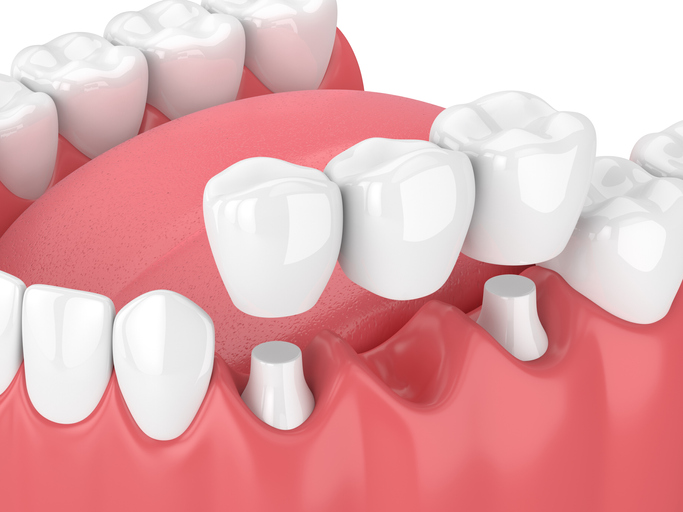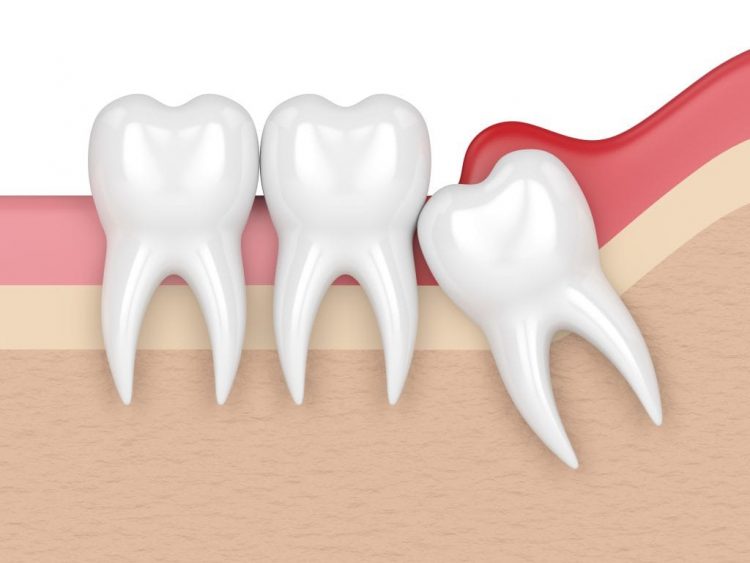
What are Dental Bridges?
Dental bridges are used to replace missing teeth by anchoring the false tooth using two or more fitted crowns on the adjacent teeth.
What are the benefits of Dental Bridges?
- Natural Looking: They look like your natural teeth.
- Comfort: They feel like your natural teeth, they do not need to be removed like dentures.
- Eating: There are no issues with eating, unlike with dentures which may move.
- Durability: Lasts 10-15 years on average.
- Convenience: Requires only 2 visits.
What is the process of getting Dental Bridges?
- Consultation. Your dentist will assess your suitability and recommend your treatment plan.
- Temporary Bridge. Next, the abutment teeth are prepared. They will be trimmed to allow room for a crown to be placed. Impressions of your teeth will be taken which will be used to manufacture the bridge. Your dentist will make a temporary bridge for you to wear while your bridge is manufactured.
- Fitting of Bridge. The temporary bridge will be removed and the new permanent bridge will be cemented to your teeth.
- Adjustments. Adjustments may be made until the bridge fits comfortably.

How long will the procedure take?
While this depends on the technology used at the dental clinic, typically a patient requires 2-3 visits excluding the initial consultation.
What are the types of Dental Bridges?
- Traditional bridges. These are the most popular type of dental bridges and are suitable for patients with two strong, natural teeth on each side of the lost tooth. Traditional bridges are strong enough to replace molars, are lightweight and enable the patient to chew comfortably. They can also last a long time if good oral hygiene is maintained. However, getting traditional bridges require teeth enamel to be removed to receive crowns.
- Cantilever bridges. Cantilever bridges are suitable for patients with one strong natural tooth or one implant beside the lost tooth. They are also lightweight and make for easy chewing. As compared to traditional bridges, cantilever bridges only have one crown and have reduced support. They also require tooth enamel to be removed.
- Maryland bridges. Maryland bridges are suitable for patients with strong, natural front teeth adjoined to the lost tooth. They act as temporary fixes for healing dental implants or before installing implants. Maryland bridges come with metal wings to bond to your adjoining teeth on both sides. However, these metal wings may cast a shadow on natural teeth. Otherwise, Maryland bridges are a cost efficient and effective alternative.
- Implant-supported bridges. As its name suggests, implant-supported bridges are supported by dental implants instead of crowns. They are suitable for patients with one or more missing teeth. An implant can be installed for every missing tooth, with the bridge supported by implants. Implant-supported bridges are suitable for patients with metal allergies and cause no damage to adjoining natural teeth.
- Veneer supported bridges. These use dental veneers to support a single missing tooth. There is a minimum of enamel removal and is ideal for lower front teeth or smaller teeth. It may not require local anaesthetic. The result is very lifelike colour and translucency.
How long do Dental Bridges last?
With proper care, dental bridges are able to last more than 10 years.

Am I suitable for Dental Bridges?
Dental bridges are suitable for anyone looking to replace missing teeth and still have healthy supporting teeth. Your dentist will be able to advise you on the best type of treatment.
Are there any risks associated with Dental Bridges?
As with any dental procedure, it is crucial to maintain good oral hygiene after. Failure to do so may lead to gum infection and tooth decay. Additionally, if the bridge does not fit perfectly, it may crack or break which can cause painful sores.
What is the difference between Dental Implants and Dental Bridges?
| Dental Bridges | Dental Implants |
| Requires enamel from natural teeth to be removed, may compromise protection | Does not require enamel to be removed |
| Requires healthy and natural adjacent teeth for support | Does not require any trimming of other teeth |
| May need to be replaced every 10-15 years | Minimal maintenance, almost a permanent solution |
| Requires very little time, from 7 days to 2 weeks | Is a very long treatment as healing may take from 3 months to 1 year |
| Does not require surgery | Requires surgery |
| Can be done in 2-3 visits | Requires multiple visits over a prolong period |
| Not as painful even with severe damage or jaw bone loss | Requires a strong jaw bone for higher success rate |
| Cheaper | Costlier especially with multiple missing teeth |
CONTACT US
Request an Appointment
Fill out the form below and we will contact you during our working hours.

